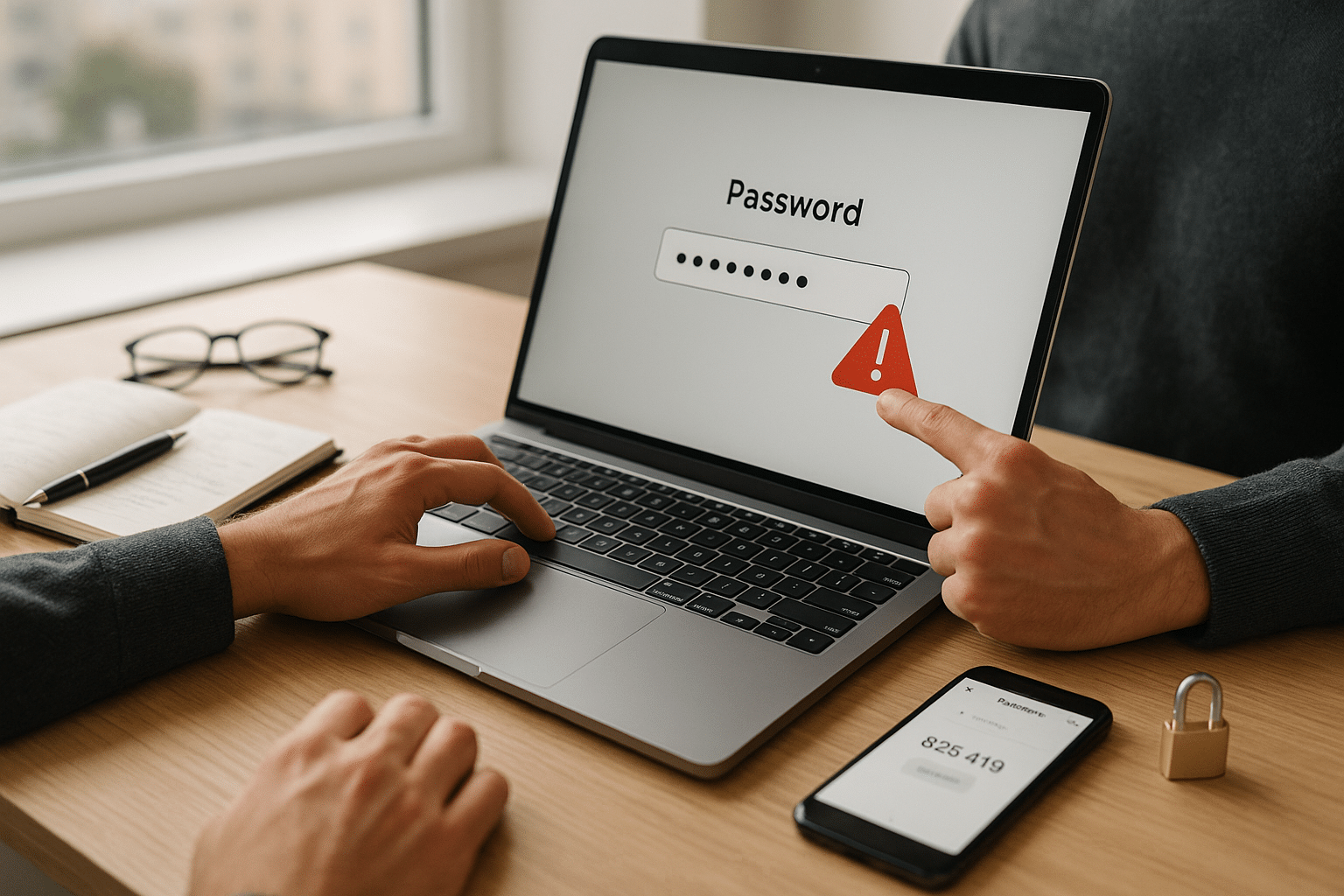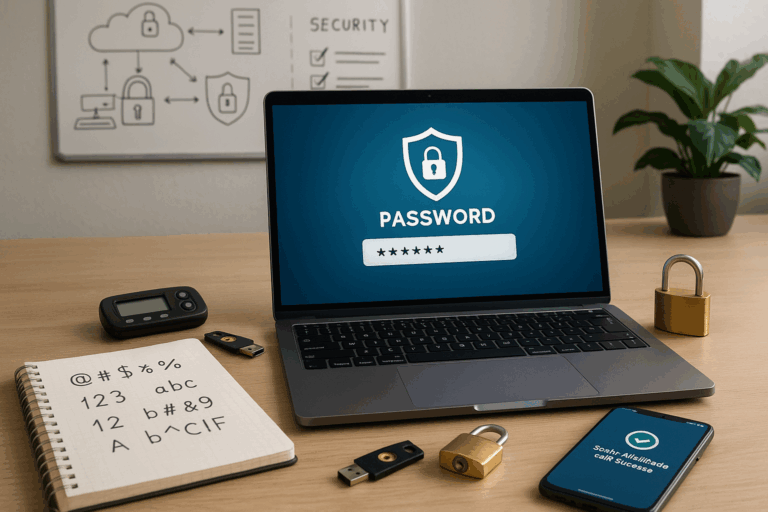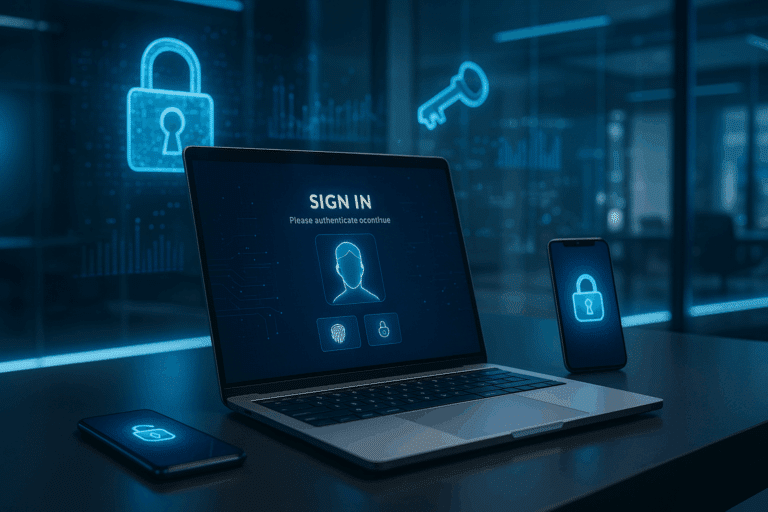M. Your phone lights up, displaying a message that instantly sweeps away the remnants of sleep from your eyes. An online service you use has suffered a data breach. Your password, possibly even your personal information, is now at risk. Sound familiar? Unfortunately, in today’s digitally-driven society, such scenarios are not as uncommon as we’d like them to be.
If you’ve ever found yourself in this situation, or if you’re seeking to bolster your knowledge on digital security, you’ve come to the right place. Welcome to our ultimate guide to handling compromised passwords!
In this comprehensive article, we’ll demystify the complex landscape of digital security, offering you clear and actionable steps to protect your digital world. Buckle up as we delve into topics such as password security, understanding data breaches, and effective strategies to handle compromised passwords.🔒
Securing the Gates: Understanding Password Security
Our digital journey begins with an exploration of password security. Passwords are the keys to our online identities, and understanding their role and importance in digital security is crucial. We’ll examine what makes a password secure and discuss the common mistakes we often make while creating them. Additionally, we’ll also uncover the truth about password strength and complexity – does it really make a difference?🤔
Data Breaches: The Unseen Threat
Next, we’ll venture into the shadowy realm of data breaches. Understanding what happens when a breach occurs, its potential impact, and how our personal information becomes vulnerable can help us fortify our digital defenses. We’ll demystify these digital attacks and explain how they can lead to compromised passwords. 🏴☠️
Compromised Passwords: Damage Control and Mitigation
After a data breach, what next? This is the question that we’ll address in the third section of this guide. We’ll outline clear and actionable steps you can take to regain control of your compromised password and protect your online presence. We’ll also share expert advice on how to handle potential threats and restore your digital security.🛡️
Future-Proofing: Towards a Secure Digital World
Finally, we’ll look towards the future. Cyber threats are continually evolving, and staying one step ahead is key to maintaining a secure digital world. We’ll delve into advanced security measures like two-factor authentication, biometric security, and password managers. Moreover, we’ll discuss how you can create a culture of digital security in your everyday life.💡
In a world where our digital presence is more significant than ever, securing our digital identities is paramount. As we navigate the complexities of compromised passwords and data breaches, remember: knowledge is power. Armed with this comprehensive guide, you’ll be well-equipped to protect your digital world and stay safe online. Let’s dive in!🚀
Securing Your Digital Universe: Recognizing the Threat
With the rapid development of the digital age, data has become as valuable as any physical asset. Personal information is now a target for cybercriminals globally. Passwords, specifically, are key targets as they serve as the gateway to this valuable information. When these passwords are compromised, the effects can be devastating. This guide aims to provide comprehensive knowledge on how to handle compromised passwords effectively. But first, let’s understand the scope of the threat.
According to a study by Verizon, approximately 81% of data breaches leverage stolen or weak passwords. This statistic underlines the importance of strong password hygiene and the potential damage that can occur when they’re compromised. It’s not just about losing control of a social media account; compromised passwords can lead to financial loss, identity theft, and business disruption.
The rise in password-related breaches can be attributed to several factors, including increased digital activity and the widespread use of weak passwords. Cybercriminals have also become more sophisticated in their methods, with phishing attacks, brute force attacks, and credential stuffing becoming commonplace.
Understanding the Risk: The Anatomy of a Password Attack
To effectively protect against compromised passwords, it’s vital to understand how these attacks occur. The three most common methods are brute force attacks, phishing, and credential stuffing.
A brute force attack involves a hacker trying numerous combinations until the correct password is found. It’s akin to a burglar trying every possible key on a lock until it opens. Phishing, on the other hand, involves tricking the user into revealing their password, usually through a fake email or website designed to look like a legitimate service. Credential stuffing is where stolen passwords are used to gain unauthorized access to user accounts.
These attacks leverage different techniques, but the end goal is the same: to gain unauthorized access to personal and confidential information. Therefore, recognizing these threats and understanding their mechanisms can be instrumental in formulating a strong defense.
Brute Force Attacks
A brute force attack is essentially a trial-and-error method used to obtain information such as a user password. In this type of attack, automated software is used to generate a large number of consecutive guesses to get the desired data.
Phishing
Phishing is a type of social engineering attack often used to steal user data, including login credentials and credit card numbers. It occurs when an attacker, masquerading as a trusted entity, tricks a victim into opening an email, instant message, or text message.
Credential Stuffing
Credential stuffing is a type of cyberattack where stolen account credentials, typically consisting of lists of usernames and/or email addresses and the corresponding passwords, are used to gain unauthorized access to user accounts through large-scale automated login requests directed against a web application.
Password Protection: Best Practices
Protecting your passwords requires a multi-faceted approach. Below are some of the best practices you can implement to secure your digital world.
- Use complex and unique passwords: Avoid common words or phrases and instead opt for a combination of letters, numbers, and symbols. Each account should have a unique password to prevent a single breach from compromising all your accounts.
- Enable multi-factor authentication (MFA): MFA adds an additional layer of security by requiring users to verify their identity using two or more different methods.
- Regularly update your passwords: Regularly changing your passwords can help protect your accounts even if a password was previously compromised.
For a visual guide on how to create strong passwords, check out this video: “How to Create a Strong Password” by Tech Insider.
What to Do If Your Password Is Compromised
If you find that your password has been compromised, it’s crucial to act quickly to mitigate any potential damage. Here are the steps you should take:
- Change your password immediately: This is the first step in regaining control over your account.
- Notify relevant parties: If the compromised password is linked to a business account, inform your IT department or service provider.
- Monitor your accounts: Keep an eye out for any suspicious activity on your accounts and report any irregularities.
Remember, knowledge is power. The more you understand about the threats posed by compromised passwords and the steps you can take to protect yourself, the safer your digital world will be.
Helpful Tools for Password Security
Several tools can help you maintain strong password security. These include password managers, security software, and hardware tokens.
| Tool | Description |
|---|---|
| Password Managers | Password managers store and encrypt all your passwords, allowing you to create complex and unique passwords for each of your accounts without needing to remember them all. |
| Security Software | Security software like antivirus and anti-malware programs can protect against threats like keyloggers that record your keystrokes to steal your passwords. |
| Hardware Tokens | Hardware tokens generate a unique code that is used in addition to your password to authenticate your identity. This can add an extra layer of security, particularly for sensitive accounts. |
For a more in-depth look at these tools, I recommend watching the video “Password Managers: How they work and why you should use one” by The Verge.

Conclusion
After an in-depth journey into the world of software engineering, we’ve made it to the conclusion of our exploration. Reflecting on all the essential points we’ve tackled, it’s clear how imperative understanding these technical aspects is, for anyone in the field of IT and beyond.
We began with a review of the basics of software engineering, including its definition, purpose, and the critical role it plays in our digital world. We dove into the vital role of software engineers, who bring ideas to life, shape our digital experiences, and drive our technological advancement. We analyzed the principles and methodologies of software engineering, learning about Agile, Scrum, Waterfall, and Lean, to mention a few.
In our exploration, we discovered the different types of software, their distinct characteristics, and the specific contexts in which each is most effective. We unearthed the importance of testing, debugging, and maintaining software. We also discussed the role of artificial intelligence in software engineering and how it’s revolutionizing the industry.
We shed light on the criticality of software security, highlighting its significance in protecting data and ensuring system integrity. Furthermore, we discussed the importance of proper project management in software engineering, its role in delivering projects on time, within budget, and to specification.
Our journey took us beyond the technical, to understanding the soft skills needed in software engineering – communication, problem-solving, creativity, and teamwork – and how these can significantly improve outcomes.
Revisiting all these points underlines the complexity and breadth of software engineering. However, it also showcases its indispensability in the age of digital transformation, where almost every facet of our lives is intertwined with technology.
This deep dive into software engineering isn’t just about understanding concepts. It’s about appreciating the role each of us can play in this exciting field, be it as a software engineer, project manager, tester, or even as a user.
Therefore, I invite you to not just read and forget. Apply this knowledge. Share it with colleagues and friends. Leave your comments and experiences below. Let’s continue the conversation, furthering our understanding and enriching our perspectives. 😊
For more in-depth research, I recommend the following reliable sources:
1. IEEE Computer Society’s Technical Committee on Software Engineering
2. ACM SIGSOFT
3. Journal of Systems and Software
4. Empirical Software Engineering Journal
Remember, the world of software engineering is vast, continually evolving, and full of potential. Happy exploring! 👩💻👨💻
Reference: IEEE Computer Society’s Technical Committee on Software Engineering, ACM SIGSOFT, Journal of Systems and Software, Empirical Software Engineering Journal.



